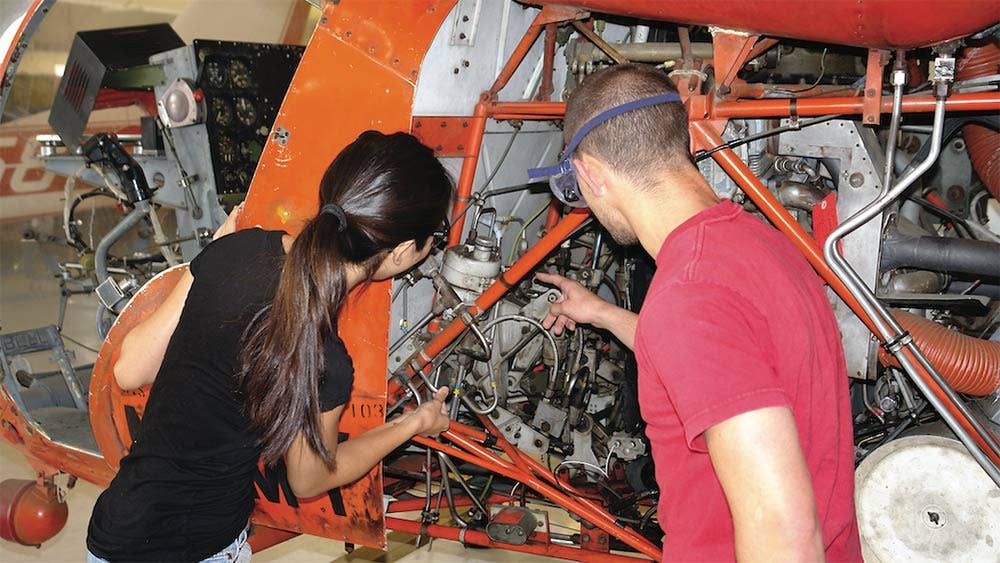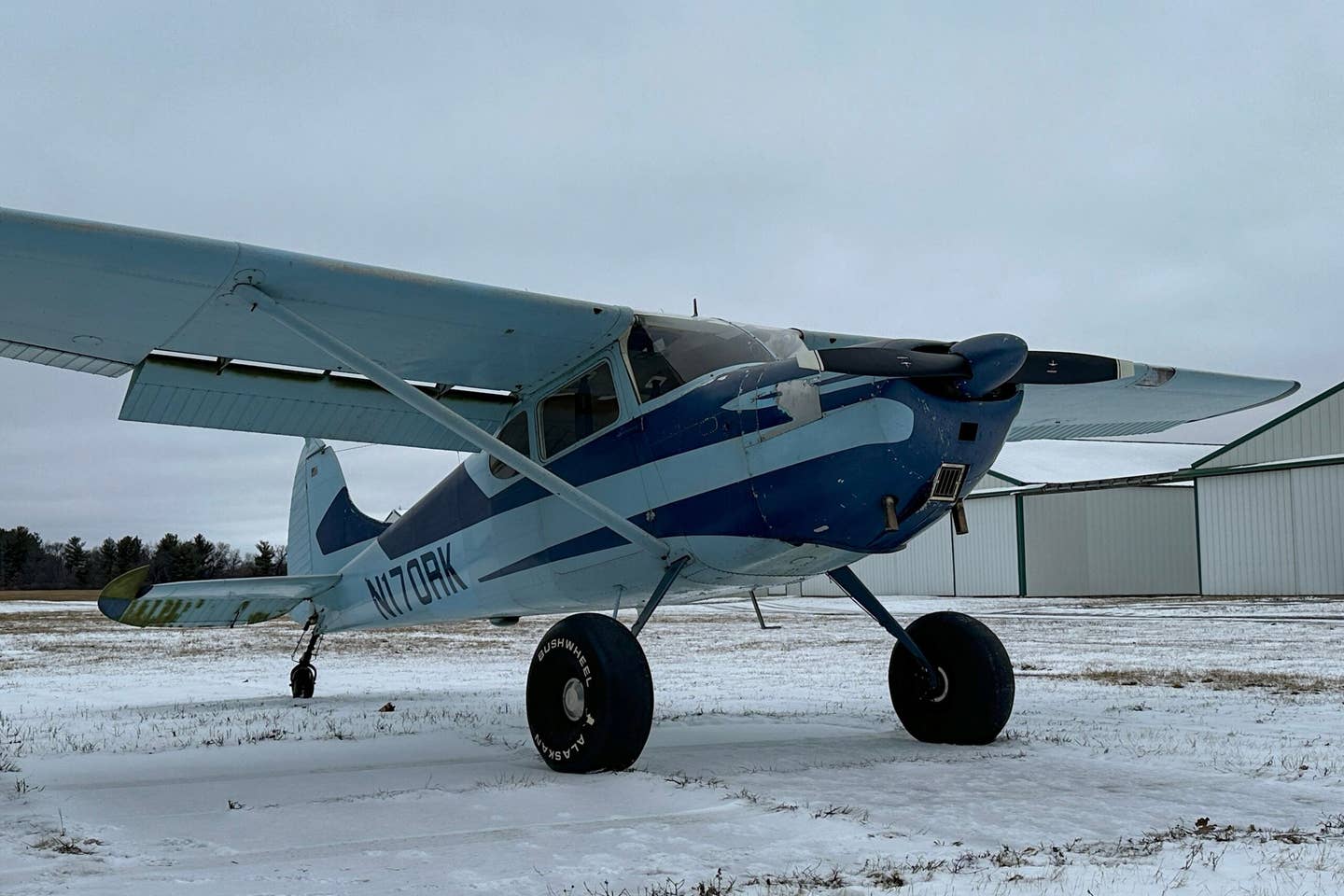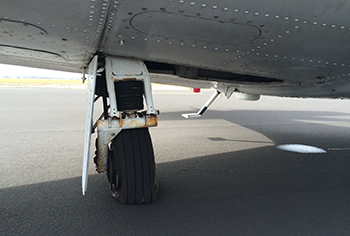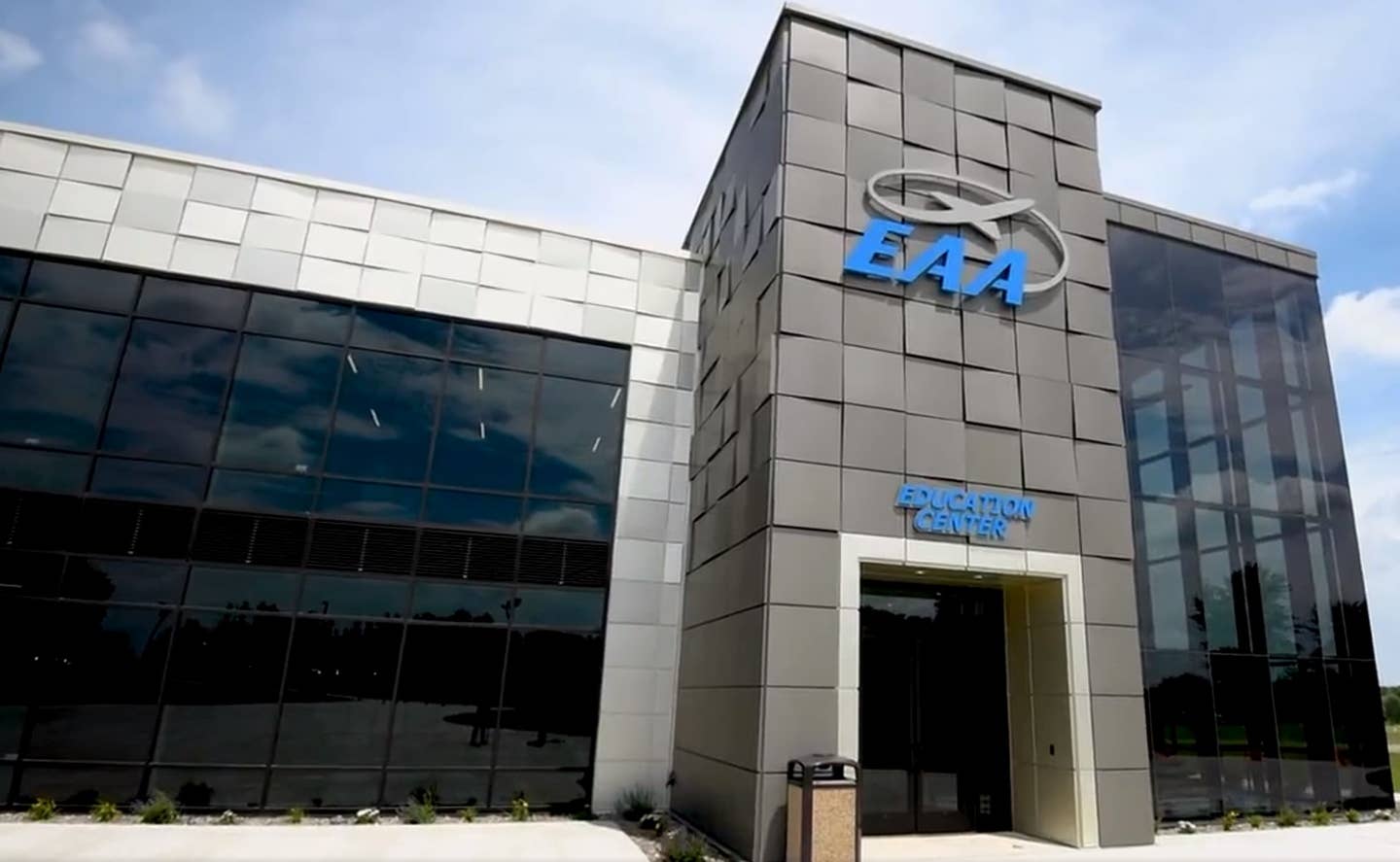CAF Airbase Georgia Keeps Vintage Warbirds Airworthy
Volunteering at the airbase helps aspiring mechanics to build time, gain experience, and prepare for the A&P test.
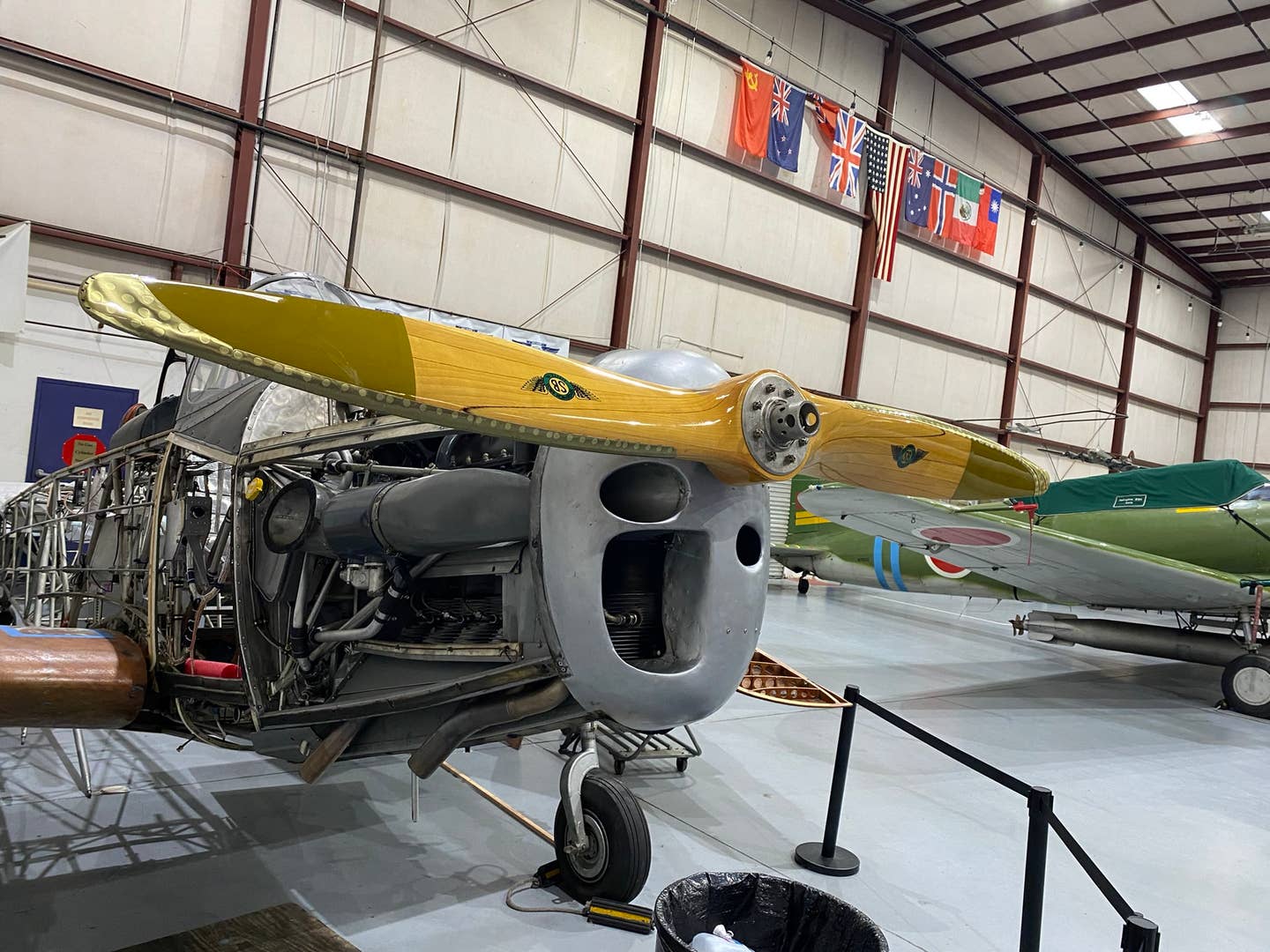
Commemorative Air Force (CAF) Airbase Georgia has a membership of approximately 200 volunteers. [Credit: Richard Scarbrough]
Pulling into Atlanta Regional Airport: Falcon Field (KFFC) off Dividend Drive in Peachtree City invariably ignites my memory and accelerates my sense of nostalgia. Being raised in an aviation family generally guarantees you will spend your formidable years pulling chocks and spinning props. The airport is an extension of the home. The third place has a picnic table adjacent to the terminal, and I often take my family there to eat and watch the airplanes depart.
I logged the better part of four decades at Falcon Field, first as a kid awestruck by the airplanes, then as an aircraft engine shop owner conducting business, and now as a journalist.
I recently met with Col. Randy Hawkins, maintenance officer for the Commemorative Air Force (CAF) Airbase Georgia for a private tour and aircraft maintenance discussion.
Airbase Georgia began with a provisional charter on February 28, 1987, and transitioned to Wing Charter No. 48 on January 30, 1989. Then called Dixie Wing by the CAF, they would hold that distinction until awarded Airbase status on February 18, 2021.
This airbase has a membership of approximately 200 volunteers. The maintenance team has 12 airframe and powerplant (A&P) mechanics on staff, roughly half of which hold an inspection authorization (IA). Also included are a dozen machinists or folks with specialized mechanical skills.
Do you remember our discussion on obtaining an A&P? One of the paths is practical experience. Randy mentioned that volunteering at the airbase is an excellent way for aspiring mechanics to build time, gain experience, and eventually take the A&P test. A vital component of on-the-job training is maintaining a logbook of work performed.
One volunteer recently presented his log to the Flight Standards District Offices (FSDO) and was met with the question, “You accomplished all these tasks?” The inspector only questioned it because the log was so detailed, and he had a broad range of work. Also, when sitting for the test, this candidate scored in the high 90s. This is an excellent example of how volunteering at the CAF can create a win-win scenario.
The airbase also has a group of female volunteers dubbed the Angels Squadron. This brings elements of Rosie the Riveter to Falcon Field and is a personal reminder for me of my Grandmother Ethel. I wrote a piece about her for International Women’s Day in 2021.
Time is a significant factor when maintaining these old warbirds. One can imagine the labor hours needed to keep each one airworthy, let alone a fleet of nine aircraft with several more in work. Because of the volunteer nature of the work, Randy has to keep a sharp eye on the maintenance. Everyone is very meticulous, as you don’t want to be the person who damages a piece of flying history. Each crewmember knows they can take their time to complete the task, as there is no critical mission that these birds have to fly by a specific deadline.
That is all good; however, he jokingly mentioned that “the annual inspection should not take a year.”
Randy and I retired to the ready room and talked about his life in aviation. His path took him from the U.S. Air Force (USAF) to instructing at Embry-Riddle Aeronautical University (ERAU) and finally closing his career at Delta Air Lines. He retired a few years ago and now fuels his purpose and passion at the CAF Airbase Georgia.
Donations are always welcome at the airbase. Contributions fund the organization, and funding is limited. The machinist types of the organization were delighted recently to receive a 3-axis CNC machine 20 hp vector drive, a great addition to the shop machinery.
Another gem caught me off guard at first. What I thought to be a toy was a 1941 Model C-3 Link “Blue Box” trainer. This device uses vacuum-operated bellows to train pilots to fly by instruments alone (IFR). Or, as my pilot friends like to say, “I Follow Rivers.” Every time I turned my head, there was another piece of history just begging to share a story.
Talking shop with Randy was a tremendous honor for me. His knowledge and attention to detail are a testament to the spirit of aviation people. You guys know what I am talking about, the folks that will brew a cup or pour a pint and talk with you for hours about making these birds taxi out and fly away.
I inquired about the maintenance practices for keeping older aircraft functioning and airworthy. Most are limited category experimental and operate with a special airworthiness certificate issued to enable the operation of surplus military aircraft. Regarding offering rides for donations, the airbase applies for a 6802 History Living Flight Experience and must renew the certification every two years. You can bet I will attempt to finagle a way to hop a ride. And, yes, I had to google how to spell “finagle.”
The team maintains the North American Aviation T-6 Texan and Beechcraft T-34B Mentor as type-certificated aircraft. A Continental Motors IO-520 Series engine powers the T-34; parts and technical data are readily available.
When tech data is not easily accessible owing to the aircraft’s age or scarcity, Randy and the team use resources adopted over the years to maintain compliance. One such site is Aircorp, a blueprints restoration company. From their website, Aircorp states they support the continued airworthiness of historical, legacy, and modern aircraft through award-winning restoration, maintenance, project management, parts fabrication, and sales.
It is mission-critical that these aircraft receive meticulous attention to detail and nothing is left to chance. I witnessed this first-hand when Randy discussed the efforts of the ongoing restorations of their 1941 Fairchild PT-19 and 1941 Stearman Navy PT-17. These trainers were produced in the same year, had very different designs and missions, and were even constructed with other materials. We talked about woodworking on the PT-19 and dope and fabric skills on the Stearman. Randy instructs the volunteers on the finer points of covering the ribs with material, rib stitching, and using an iron to pull everything taut.
Other aircraft on-site at the Airbase are a North American P-51D Mustang, Bell P-63A Kingcobra, Douglas SBD-5 Dauntless, a replica Nakajima B5N2, and my personal favorite, the Chance Vought F4U Corsair. If anyone is looking for a last-minute Christmas gift for me, please consider Baa Baa Black Sheep on DVD. You can even bundle that with Rat Patrol and save money! See how I am always looking out for you by providing excellent resources.
A few days after my visit, I talked with Col. Joel Perkins, the airbase leader, about why people would consider joining the CAF or donating their time. He offered the following personal insight as to why he became involved with the CAF.
“At Airbase Georgia, we have a saying that you come for the aircraft, but you stay for the people. That is how my involvement began. I was drawn in by these iconic aircraft and the history they represent. As I got more involved in the organization, friendships started to form, and I quickly realized there was so much more to the CAF than I expected. These wonderful people have become my extended family.”
That sums it up, folks.
The irony of the timing of this piece is not lost on me. I planned on writing about the CAF after attending the Atlanta Air Show at Peachtree City’s Falcon Field in early November. As I got to the viewing area, I saw their hangar and thought the CAF would be a great story. Little did I know how important telling their story would be.
One week later, tragedy struck when a CAF Boeing B-17 Flying Fortress and Bell P-63 Kingcobra collided mid-air at the Wings Over Dallas airshow. FLYING first reported the incident the next day and continues to provide updates on the investigation.
The Commemorative Air Force addressed questions concerning supporting their families during this difficult time with this Twitter post. They instruct those who donate to “designate your donation to CAF, and it goes into a set-aside fund just for these six families.” I am confident that any amount would help.
This is not the time or place to debate the issue of flying vintage aircraft. Trust me; there will be lots of opportunities in the future. No, this time is for respect, reflection, and remembrance for those lost fulfilling a mission they dearly loved. We can honor them by treating those who hold a different opinion than our own. That can only happen with open, honest discussion.
Joel and I did spend some time talking about keeping these old warbirds flying. He believes “there are plenty of old warbirds on static display.” I must say that I tend to agree with him. There is nothing like hearing a radial engine fire up and seeing a proud iconic flying history piece taxi out. The thing is, once they go static, they rarely fly again.
I will leave with a quote posted on the Airbase Georgia website from Robert A. Heinlein, the science fiction author, aeronautical engineer, and naval officer, in which he says, “A generation which ignores history has no past—and no future.” Well said, sir.

Sign-up for newsletters & special offers!
Get the latest FLYING stories & special offers delivered directly to your inbox


